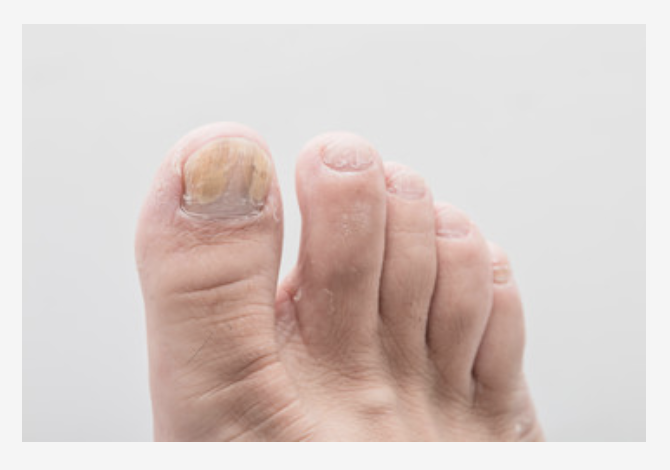Onychomycosis, more commonly referred to as toenail fungus, is a fungal infection of the toenail. This can leave your toenails cracked, discolored, enlarged, and brittle. For many, this fungal infection is painless. For some, however, it can cause some serious harm. While we have written an abridged resource on Fungal Nails elsewhere on the website, we will be taking a littlre more of a focused look at what a fungal infection of the nails is in this blog.
What is Onychomycosis?
Onychomycosis is caused by various fungal organisms. The most common fungi associated with toenail fungus are of the dermatophyte variety. Dermatophytes a pathogenic fungus that grows on skin, mucous membranes, hair, and nails. These fungis are also responsible for common ailments such as ringworm and athletes foot.
What Causes Onychomycosis?
While fungal nail infections can develop at any age, it is more common in older adults. As nails age, they become brittle and dry, thus causing cracks to form. These cracks allow for fungi to embed themselves in your nails.
Toenail fungal infection often starts out as a case of athlete’s foot. If left untreated, it can spread from foot to toe, and again from toenail to toenail.
How Can I Treat Onychomycosis?
Dermatophytes require keratin to grow, and since keratin can be found in the fiberous layers of the body such as skin, nails and hair, it most commonly requires some form of topical treatment.
Oral pills are available for patients who find topical treatments ineffective, but this method of treatment requires patients to grow out their old nails – a process that takes upwards of around eight months.
A new form of toenail treatment that is non-invasive, yet highly effective, is laser treatment. Laser treatment for toenail fungus is painless and takes only 10 minutes per toe.
How to prevent toenail fungus
Fungi thrive in moist environments, so it is incredibly important to keep your toenails short, clean, and dry.
- Dry your feet and toes thoroughly after showering
- Always wear shoes in public places, pools and locker rooms
- Wear synthetic socks that wick moisture from your feet. Change your socks often if you are a heavy sweater
- Wear shoes that breath well and fit properly
- Avoid socks that don’t allow your feet to breathe
- Don’t pick the skin around your toenails
- Use antifungal spray or powder on your feet
- Keep your pedicure instruments clean and disinfected
- Don’t try to cover up the infected toenail with nail polish. This can make things far worse by locking in moisture, thus making the fungus grow more rapidly

